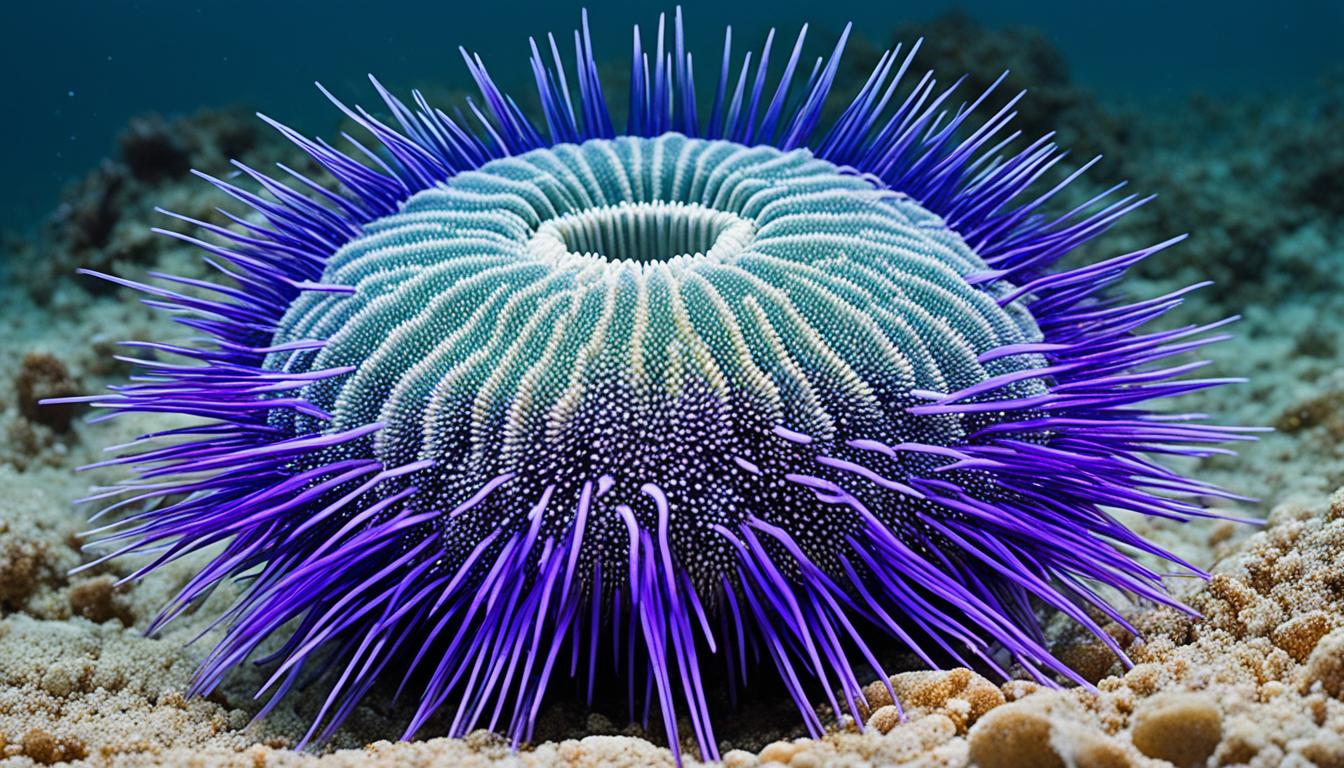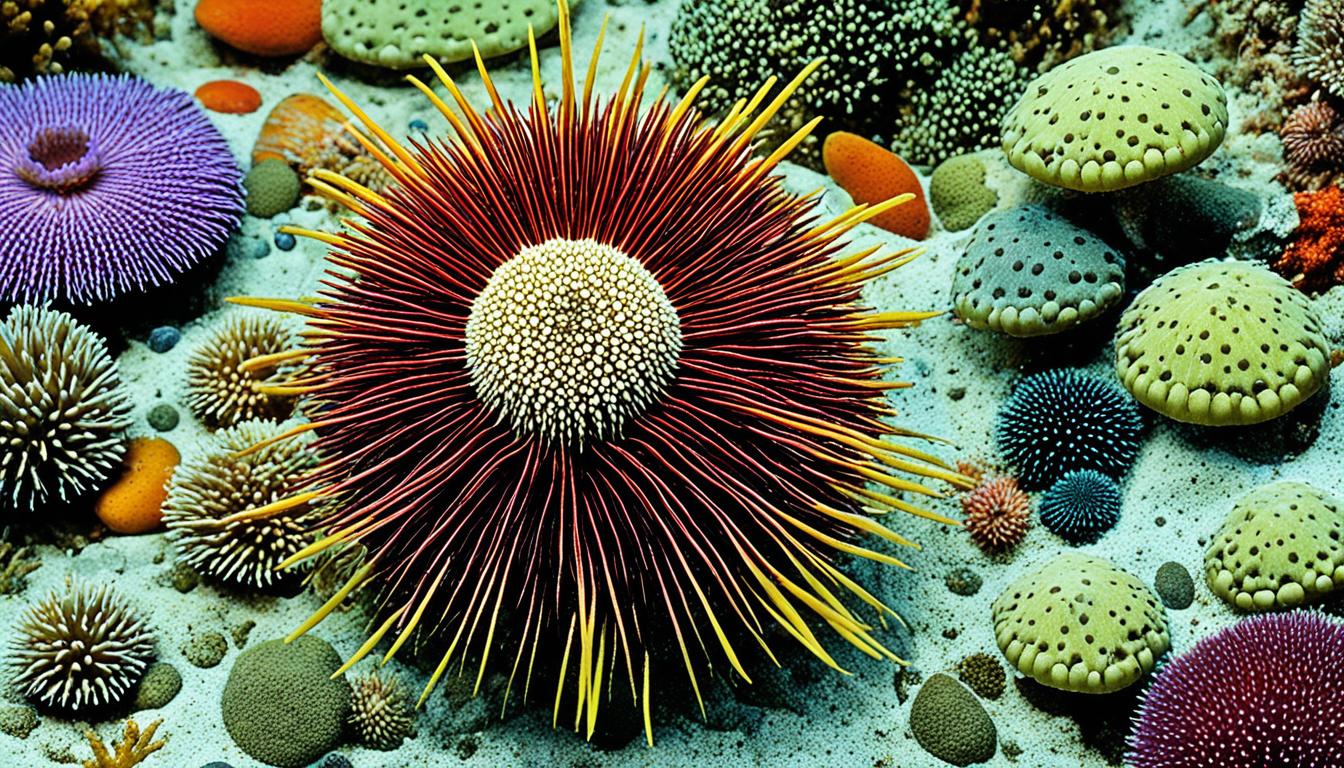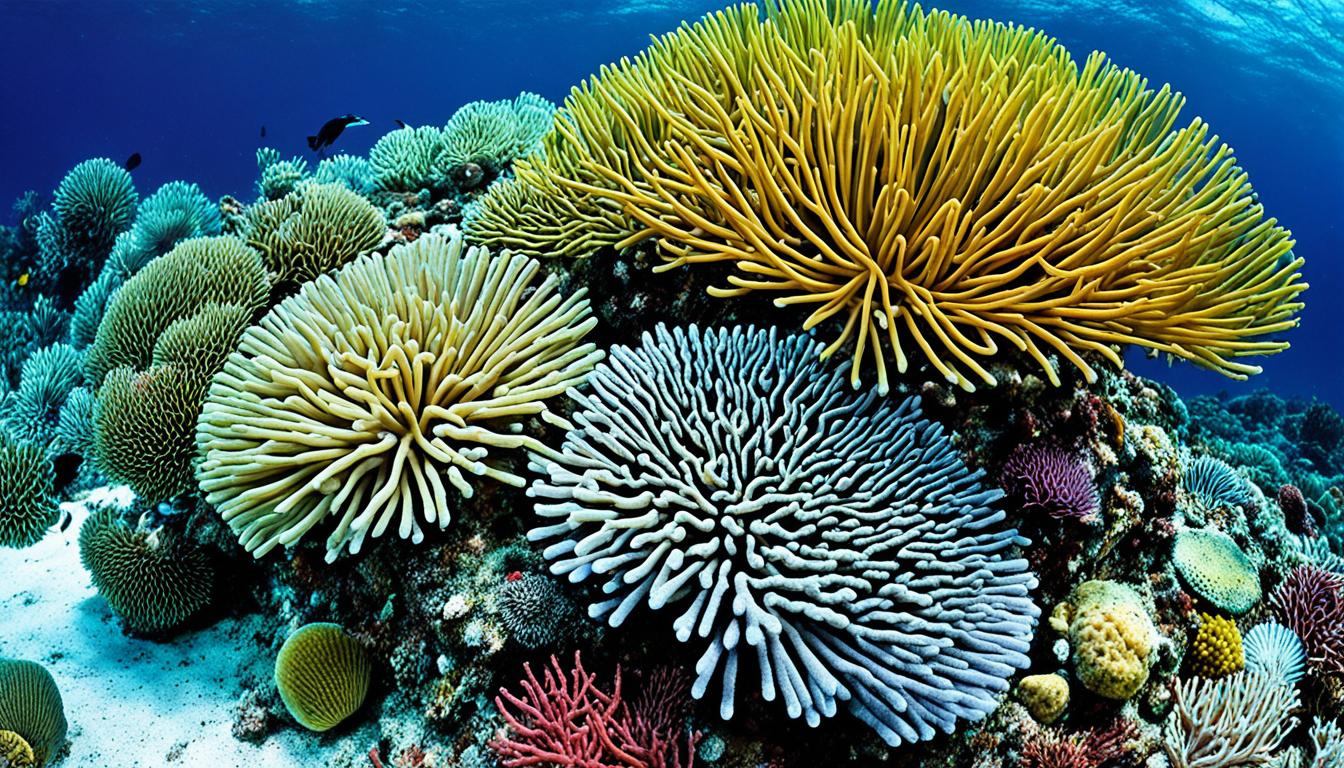There are only 5 species of rhino left in the world: 2 live on savanna and shrubland in Africa; and 3 live in tropical jungles across Asia and South-East Asia.
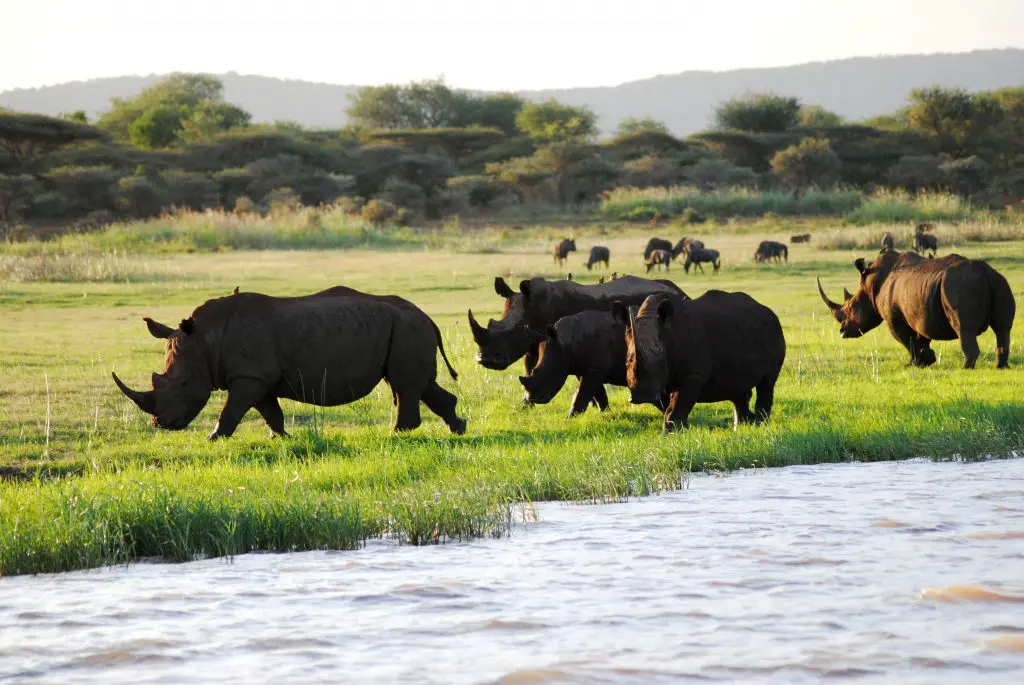
Where Do Rhinos Live?
You can find wild rhinos in around 20 different countries in both the northern and southern hemispheres.
They are found (albeit reintroduced) across most of central and southern Africa; southern Asia (mainly India and Nepal); and the islands of Indonesia in South-East Asia.
They can be found living in a variety of habitats ranging from coast and wetlands to mountains and deserts, but mainly savanna and forest. They are all herbivorous and huge – so need a lot of plant material every day to survive. Something in short supply in the more developed or heavily farmed areas – leading to their status as endangered to some extent across their entire range.
Rhinos That Live In Africa:
The Black and White rhinos of Africa are iconic as symbols of conservation – however, both of them are actually just grey?
They both have 2 horns on their heads with the White Rhino’s can reach up to a ridiculous 1.5 meters (5ft) at the maximum extreme – and only in the females. The White Rhino is also the largest land animal after the elephants – with males reaching over 1.8m (6ft) tall and 3.8 tonnes (8300lbs) in weight.
Feeding on various grasses and low shrubs, they walk for miles every day eating over 50kg (110lbs) every day. The White Rhino has a flat top lip more suited to grazing on the ground, whereas the smaller Black Rhino has a pointed top lip – more suited to pulling off leaves and branches from up high to eat. They both browse their way through food from Senegal to South Sudan and down to South Africa.
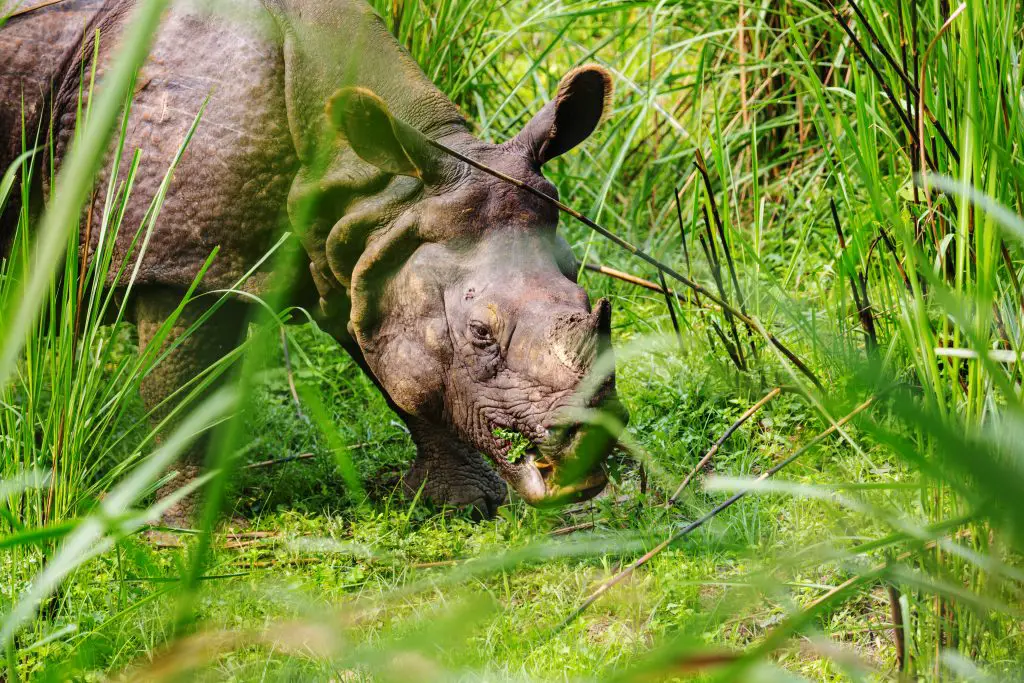
Rhinos That Live In Asia:
Only the Indian Rhino (or Greater One-horned Rhino) lives in Asia – in pockets of forest, grassland, and inland wetlands across India and Nepal.
This species of rhino has only one horn and is ‘plated’ meaning its skin is divided up into plates or sections. The males of the species have immense neck folds, increasing as they age. The young calves start life without horns.
This species has quite a diverse habitat and is found in many places as it makes the best of the available food resources. With no predators as adults (except man) they are still quite secretive and have learned to avoid busy places. They also have dedicated conservation patrols to deter poachers as in the past there were around 1000 rhinos killed every year. Considering their population is estimated to be only around 3500 today, this had to be stopped.
Rhinos That Live In South-East Asia:
The two rhino species with the smallest populations are the Sumatran and Javan rhinos. Two of the smallest rhinos, these two are completely forest-dwelling and are in real conflict over land use. The Javan Rhino is only found in one small part of south-west Java today – and nowhere else on earth. There are not even any Javan Rhinos in zoos or private collections.
Browsing on foliage, twigs, and fruits, these two large mammals wander through jungles and waterways almost unseen by many (even though they are still around 1.5m (5ft) tall and over 2.5m (8ft) long!). Weighing in at around 680kg (1500lbs) – they need to eat a lot of food each day to survive and can come into conflict with humans when doing so.
What Are the Predators of Rhinos?
Rhinos’ natural predators are few, but they pose a significant threat. Lions and hyenas, with their keen hunting skills, often prey on young and weak rhinos. Additionally, crocodiles and tigers can be formidable adversaries, targeting rhinos near water sources. Poaching, however, remains the rhinos’ greatest threat, highlighting the urgent need for conservation efforts.
Do Rhinos Live In Jungles?
Yes, they do. Even though they are huge animals – they are right at home in jungles. Following trails used by other animals and with a habit of moving through water – they are total naturals in these jungle environments.
We often think that larger animals should be out and exposed on the open plains – and rhinos from Africa and Asia usually are – but the (relatively) smaller rhinos are perfectly happy clambering under foliage, under dense vegetation, and through swamps and mud pools – easily able to scale the muddy banks.
However, saying this – living in a jungle isn’t the best choice of habitat once humans are on the prowl as we are clearing forests like there is no tomorrow (ironically). Reducing the habitat that these large mammals need is actually forcing them into extinction – and the two mainly-forest dwelling species (the Javan and Sumatran) are restricted to such small areas that they are fighting a losing battle for survival.








